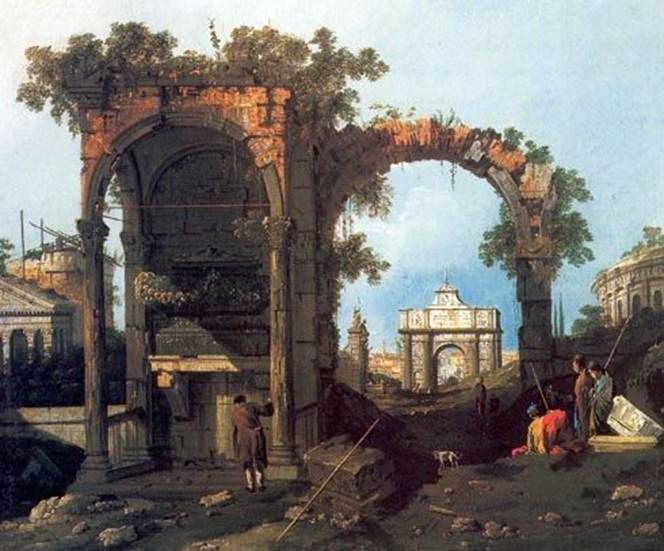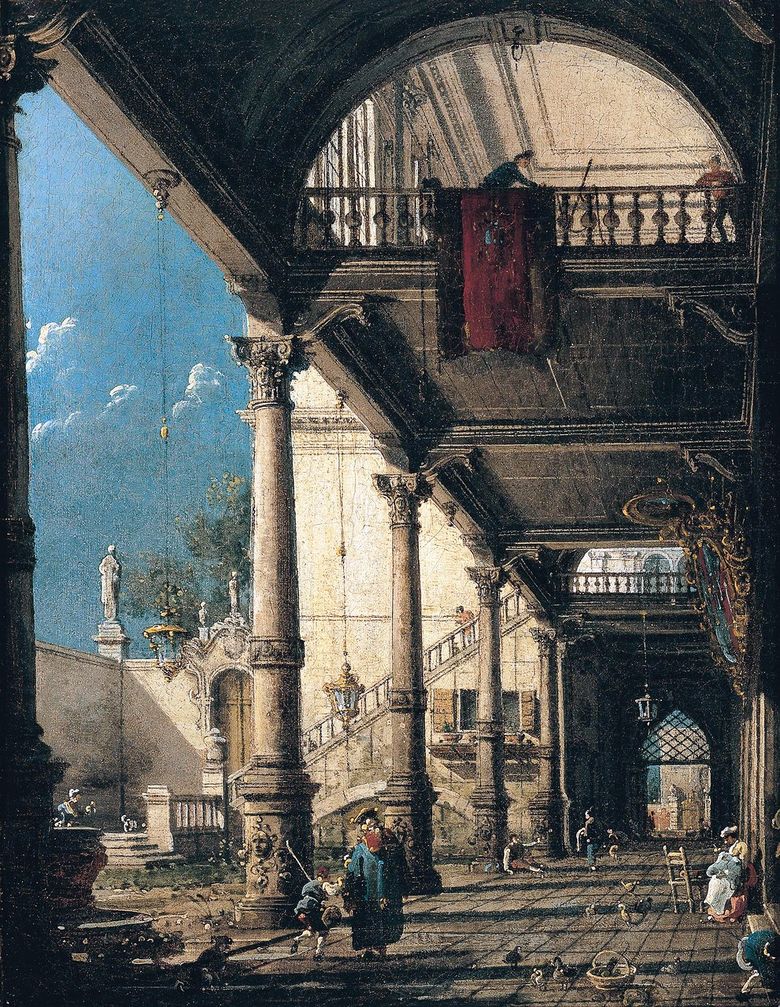
Sometimes, striving to achieve artistic harmony, Canaletto created a strange space that has little to do with reality. However, he did it subtly enough not to turn his work into a fantasy. In some cases, the artist only slightly rearranged the accents in a well-known scene to the spectator, in others – he acted more radically.
Canaletto treated his native Venice not as frozen forever, but as an artistic semifinished product, allowing fascinating transformations and creative interpretations. “Capriccio” was his favorite genre. The well-known collector of the XVIII century Algarotti defines this genre as “a scene composed of elements that are collected from different places.” If we talk about such works of Canaletto, they represent poetic landscapes, collectively collecting architectural monuments of Rome, Padua, Venice and England.
One of the most famous paintings of Canaletto, performed in the genre of “Capriccio”, is “Capriccio with classical ruins”. Here, the artist compositionally united in the confined space the ruins of ancient buildings, which he sketched during his short stay in Rome in 1719.
 Capriccio with the ruins and gate of Portello in Padua by Antonio Canaletto
Capriccio with the ruins and gate of Portello in Padua by Antonio Canaletto Capriccio with Colonnade by Antonio Canaletto
Capriccio with Colonnade by Antonio Canaletto Capriccio aux ruines classiques – Antonio Canaletto
Capriccio aux ruines classiques – Antonio Canaletto Capriccio avec Colonnade – Antonio Canaletto
Capriccio avec Colonnade – Antonio Canaletto Capriccio con columnata – Antonio Canaletto
Capriccio con columnata – Antonio Canaletto Capriccio con ruinas clásicas – Antonio Canaletto
Capriccio con ruinas clásicas – Antonio Canaletto Perspective with the portico by Antonio Canaletto
Perspective with the portico by Antonio Canaletto Colosseum by Antonio Canaletto
Colosseum by Antonio Canaletto